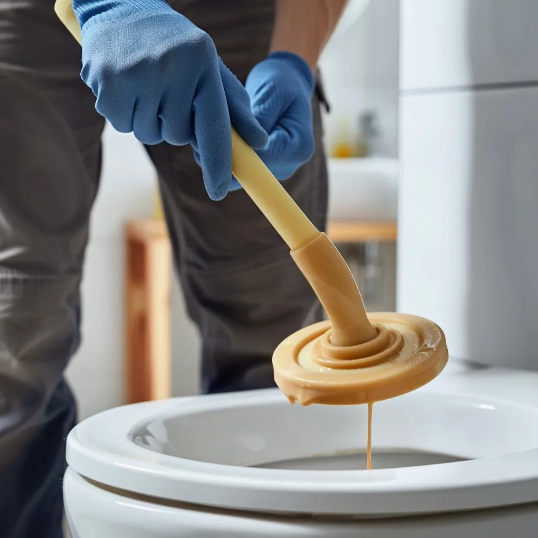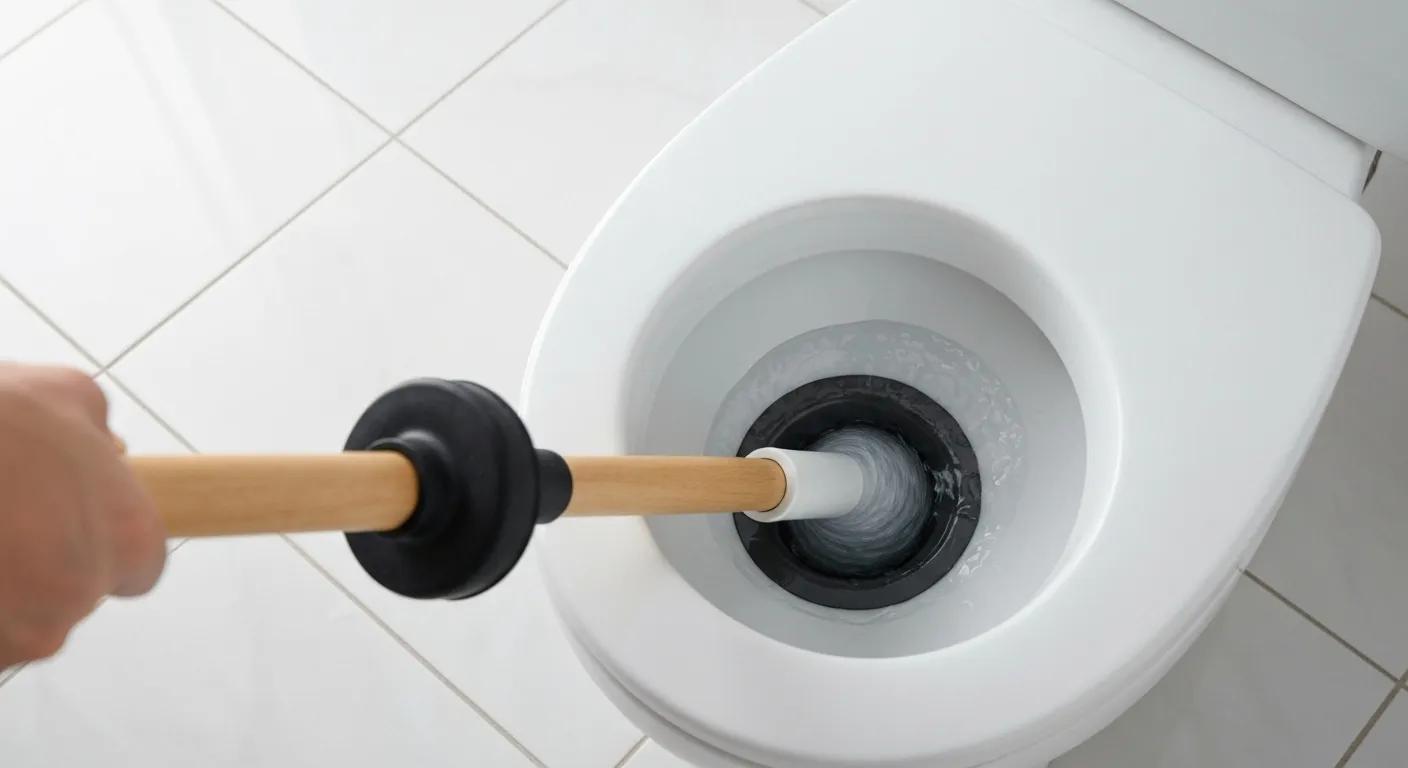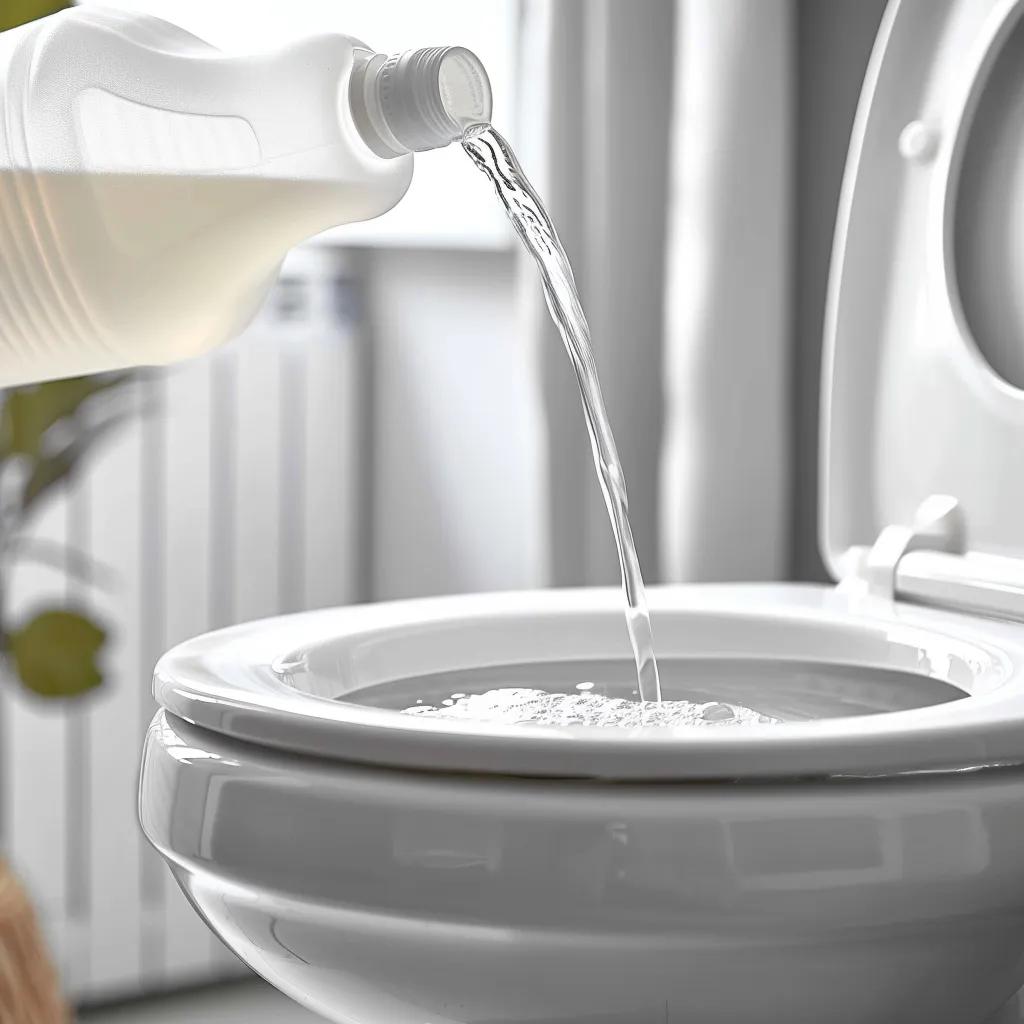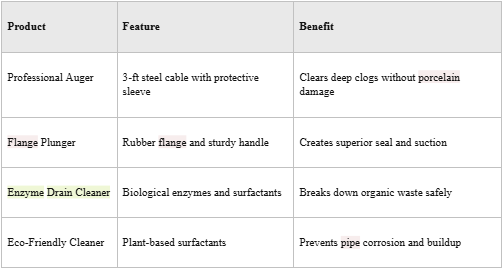
7 Best Tips on How to Unclog a Toilet
Clogged toilets disrupt daily routines, risk overflow and signal underlying plumbing issues. Mitchel Plumbing and Gas brings you proven strategies to tackle a blocked toilet how to unclog scenarios with confidence. In this guide, you’ll discover the most common clog causes, step-by-step plunging techniques, no-plunger remedies, advanced auger usage, proactive prevention, when to call our licensed plumbers and which tools we recommend. Each tip delivers actionable instructions and expert insights empowering you to restore optimal flush performance while understanding when professional intervention adds lasting value.
What Are the Most Common Causes of a Blocked Toilet?
Blocked toilets most often occur due to excessive toilet paper, non-flushable items or vent pipe obstructions that disrupt water flow and trap waste, understanding these causes empowers you to select the right unclogging method and prevent recurrence.
Causes of Toilet Clogs
Toilet clogs are often caused by excessive toilet paper, non-flushable items, or obstructions in vent pipes. Understanding these causes is important for selecting the appropriate unclogging method and preventing future issues. Non-flushable items, such as wet wipes and feminine hygiene products, can lodge in the trapway and drain pipe, obstructing water movement.
How Does Excessive Toilet Paper Cause Toilet Clogs?
Excessive toilet paper blocks the trapway by absorbing water and forming dense masses that resist flushing action, leading to slow drainage and overflow risks. When paper accumulates faster than the flush can carry it away, it compacts in the S-bend and sewer line, creating a full blockage. Reducing paper use per flush and opting for septic-safe varieties helps maintain unobstructed flow and limits the need for preventative toilet maintenance.
Transitioning from diagnosis to action, the most common DIY fix leverages a plunger.
Can Non-Flushable Items Lead to Toilet Blockages?
Non-flushable items such as wet wipes, feminine hygiene products and small toys lodge in the trapway and drain pipe, obstructing water movement. Each foreign object introduces an additional anchor for debris, compounding the risk of a full stop in flow. Educating household members on flushable vs. non-flushable materials eliminates these blockages at the source and supports a healthier plumbing system. This clarification paves the way for mastering the plunger method.
What Role Do Sewer Line and Vent Pipe Issues Play in Toilet Clogs?
Sewer line collapses, tree-root intrusion or blocked vent pipes can cause multiple drains including the toilet to back up simultaneously. When vents are obstructed, negative pressure prevents proper flushing and can siphon water from traps, allowing sewer gases to enter. Recognising these advanced causes indicates when professional services like professional toilet clog removal are necessary to clear mainline obstructions and restore balanced airflow before repeating clogs occur.
How Can You Unclog a Toilet Using a Plunger Effectively?

A plunger creates a pressure differential that dislodges clogs by forcing water through the trapway, restoring unobstructed flow and preventing overflow hazards.
Plunger Techniques
A plunger creates a pressure differential that dislodges clogs by forcing water through the trapway, restoring unobstructed flow and preventing overflow hazards. The correct type of plunger, such as a flange plunger, ensures a proper seal around the toilet's curved trapway, maximising pressure and minimising splashback.
Which Type of Plunger Is Best for Toilet Clogs?
Selecting a flange plunger ensures a proper seal around the toilet’s curved trapway, maximising pressure and minimising splashback.
Below is a comparative overview of common plunger types:

Flange plungers deliver superior seal and force for toilet clogs, while cup plungers suit sinks or tubs. Proper tool choice accelerates clearing and reduces relapses, guiding you toward advanced auger techniques when needed.
What Is the Step-by-Step Technique for Proper Plunging?
Follow these steps to maximise suction and displacement:
- Adjust water level so the bowl is half full to aid pressure transfer.
- Position the flange plunger over the drain hole, ensuring a tight seal.
- Pump forcefully in a push-pull motion for 15–20 seconds.
- Break the seal gently and observe drainage; repeat if necessary.
Effective plunging hinges on creating consistent pressure waves that dislodge clogs. Mastery of this technique leads naturally to exploring no-plunger alternatives for minor blockages.
What Are Common Mistakes to Avoid When Using a Plunger?
Avoid ineffective plunging by remembering these pitfalls:
- Using a flat cup plunger in a curved bowl prevents a tight seal and reduces force.
- Pumping too quickly can introduce air pockets that diminish pressure.
- Overfilling the bowl with water can cause overflow during aggressive plunging.
By steering clear of these errors, your plunging sessions become more efficient and less messy, setting the stage for no-plunger methods under common household conditions.
What Are the Best No-Plunger Methods to Unclog a Toilet?

No-plunger methods rely on lubrication, chemical reactions or physical retrieval to dissolve or extract simple clogs, reducing mess and tool dependency.
How Does Dish Soap and Hot Water Help Clear Toilet Blockages?
Dish soap lubricates the paper or grease in the clog, while hot (not boiling) water softens and breaks down obstructions, enabling gravity to carry debris through the trapway.
- Pour one cup of liquid dish soap into the bowl.
- Gently add a gallon of hot water from waist height to create pressure.
- Let sit for 15 minutes, then flush to verify clearance.
This method offers safe, eco-friendly clearing for minor blockages and often precedes recommendations for more reactive solutions like baking soda and vinegar.
Can Baking Soda and Vinegar Effectively Unclog a Toilet?
The baking soda and vinegar reaction generates carbon dioxide bubbles that agitate and loosen clogs when applied correctly:
- Pour one cup of baking soda into the bowl.
- Add two cups of white vinegar and let fizz for 20 minutes.
- Follow with hot water and flush to confirm drainage.
The fizzing reaction breaks up organic material, creating a chemical-free unclogging alternative that complements grease-softening dish soap treatments.
What Other Household Items Can Help with Minor Toilet Clogs?
Beyond soap and acid, simple tools can retrieve or dislodge items without specialised equipment:
- A wire coat hanger bent into a hook can extract lodged debris.
- A toilet brush handle used gently can agitate blockages near the trapway.
- A plastic bottle inverted and pushed vigorously can mimic plunger action.
These quick-fix items address light obstructions and prepare the bowl for more robust methods like auger insertion when needed.
When and How Should You Use a Toilet Auger (Plumbing Snake) for Stubborn Clogs?
A toilet auger extends a flexible cable through the trapway to break up or retrieve deep obstructions, enabling you to clear clogs beyond plunging reach while protecting porcelain integrity.
What Is a Toilet Auger and How Does It Work?
A toilet auger consists of a coiled steel cable, protective sleeve and crank handle that you insert into the bowl’s drain. Rotating the handle advances the cable, hooking or shattering the clog for removal. This direct mechanical approach resolves dense or foreign-object blockages that resist other DIY attempts.
How Do You Use a Toilet Auger Safely Without Damaging Porcelain?
To avoid scratches and chips, follow these steps:
- Slide the auger’s protective sleeve against the porcelain wall.
- Insert the cable tip gently into the drain until you feel resistance.
- Crank clockwise to bore into the clog, then reverse to withdraw material.
- Flush periodically to confirm gradual clearing.
Maintaining a steady, controlled motion prevents porcelain abrasion and prepares your plumbing for routine preventive care.
When Is a Toilet Auger Not Enough and Professional Help Is Needed?
If repeated snaking fails, or you notice sewage backup, multiple slow drains or sewer odors, these signs point to mainline or vent-pipe issues. In such cases, rely on Mitchel Plumbing and Gas’s advanced services such as hydro-jetting, camera inspection and emergency plumbing services to clear complex obstructions and restore system balance.
How Can You Prevent Future Toilet Clogs and Maintain a Healthy Plumbing System?
Proactive habits and regular inspections keep your toilet flowing freely, reduce emergency call-outs and extend fixture lifespan.
What Are Best Practices for Toilet Usage to Avoid Blockages?
Adopt these habits to minimise clogs:
- Flush only human waste and toilet paper.
- Avoid “flushable” wipes and hygiene products.
- Educate family members on proper disposal.
Consistent usage standards protect the trapway and sewer line, reducing the frequency of obstructive incidents.
How Often Should You Perform Toilet Maintenance?
Inspect your toilet every three months by checking flush performance, tank components and vent openings. Lubricate flapper seals annually, and run water through vents to clear minor blockages. Scheduled maintenance prevents buildup and signals when professional inspection is warranted.
How Does Understanding Your Home’s Plumbing System Help Prevent Clogs?
Knowledge of vent pipes, trapways and sewer lines clarifies how each component influences flush efficacy. Proper venting ensures smooth flow, while clear mainlines avert backup. Recognising these relationships enhances troubleshooting skills and strengthens communication when you request professional toilet clog removal.
When Should You Call Mitchel Plumbing and Gas for Professional Toilet Clog Services?
What Are the Signs That Indicate You Need a Professional Plumber?
Seek expert help if you experience:
- Recurring blockages within days of unclogging.
- Multiple fixtures draining slowly simultaneously.
- Sewage odors or visible backups in floor drains.
What Advanced Clog Removal Services Does Mitchel Plumbing and Gas Offer?
Our licensed plumbers deploy professional-grade equipment and techniques:
- Hydro-jetting to scour pipe interiors with high-pressure water.
- Camera inspection to pinpoint hidden faults and build a repair plan.
- Trenchless drain repair to restore flow without extensive excavation.
These services eliminate root causes and prevent future disruptions, reinforcing system integrity.
How Can Emergency Plumbing Services Help with Severe Toilet Blockages?
Rapid response emergency plumbing services deliver 24/7 assistance when clogs threaten overflow or sanitation. Our plumber arrives fully equipped to assess, clear and secure your system minimising damage and restoring safe operation immediately.
What Tools and Products Does Mitchel Plumbing and Gas Recommend for Toilet Clog Solutions?
Using quality tools and eco-friendly products ensures efficient unclogging and long-term pipe health, reducing future service needs.
Before selecting tools, review our top recommendations.

Which Plungers and Toilet Augers Are Most Effective?
Mitchel Plumbing and Gas endorses flange plungers made from durable EPDM rubber and closet augers with corrosion-resistant cables, ensuring reliable suction and long service life.
Are Chemical Drain Cleaners Safe and When Should They Be Used?
Chemical drain cleaners can dissolve clogs quickly but risk pipe corrosion and septic system imbalance if overused. Reserve them for persistent organic blockages, follow manufacturer instructions and rinse thoroughly with water.
How Do Eco-Friendly and Smart Plumbing Solutions Prevent Toilet Clogs?
Eco-friendly enzyme cleaners maintain clear pipes by digesting organic debris over time, while smart leak detectors and flush sensors alert you to early warning signs. Integrating these innovations reduces manual intervention and extends plumbing reliability.
Restoring optimal flush performance begins with the right approach, leveraging these expert tips helps you conquer clogged toilets safely and effectively.
Rest assured, Mitchel Plumbing and Gas stands ready to support your DIY efforts and provide professional backup for any stubborn or system-wide issues.
Recent Post

Are heat pump hot water systems noisy
When considering the installation of a heat pump hot water system in your Brisbane home, one question that often surfaces is: Are these systems noisy? It's a valid concern for homeowners and one that Mitchell Plumbing and Gas takes seriously, as the comfort of your home environment is paramount. In this article, we'll explore the noise levels of heat pump hot water systems, factors that influence these levels, and how they compare to traditional water heating solutions.

Gas vs Electric Hot Water Systems
At Mitchell Plumbing & Gas, we know that both gas and electric hot water systems offer different benefits for Brisbane homes. Gas hot water systems use natural gas or LPG to heat water, while electric hot water systems rely on electric heating elements. These hot water systems differ in several ways:

7 Best Solar Hot Water Systems
A solar hot water system is a smart investment for Australian homes, offering a blend of energy efficiency and cost savings. The term "best" in solar hot water systems refers to units that provide reliable hot water supply while maximising solar energy use and reducing electricity costs. These hot water systems should match your household's water usage, suit the local climate, and come with strong warranty protection.






.svg)